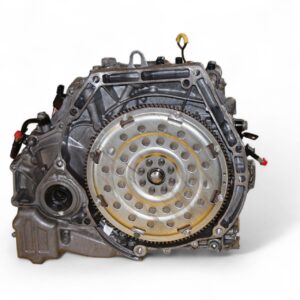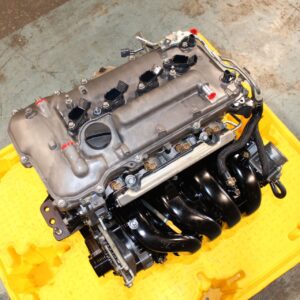Subtotal: $2,538.00
Honda Transmissions: Everything You Need to Know About Performance, Types, and Maintenance
When it comes to reliability, performance, and innovation, Honda has long been a leader in the automotive industry. One of the key components contributing to Honda’s reputation is its transmission system. Whether you’re driving a Honda Civic, Accord, CR-V, or Pilot, the transmission plays a crucial role in delivering smooth acceleration, fuel efficiency, and overall driving performance.
In this comprehensive guide, we’ll dive deep into everything you need to know about Honda transmissions—including the types of transmissions Honda uses, common transmission problems, maintenance tips, and what to expect when replacing or repairing your transmission.
What is a Transmission?
Before diving into Honda-specific transmissions, it’s essential to understand what a transmission does. The transmission is a critical component of your car’s drivetrain that controls the power generated by the engine and transfers it to the wheels. It adjusts the gear ratios, allowing the car to speed up, slow down, and handle different driving conditions.
Types of Honda Transmissions
Honda vehicles use several different types of transmissions depending on the model and trim level. These include:
1. Manual Transmission (MT)
The manual transmission is a traditional system where the driver shifts gears manually using a clutch pedal and gear stick. Honda offered manual gearboxes in earlier models of the Civic and Accord and continues to include them in sportier trims like the Honda Civic Si.
Pros:
-
Better driver control
-
Lower cost of maintenance
-
Improved fuel economy (in some cases)
Cons:
-
Requires more driver effort
-
Not ideal for stop-and-go traffic
2. Automatic Transmission (AT)
Automatic transmissions have long been favored for convenience. These systems shift gears automatically based on speed and load without input from the driver.
Honda automatic transmission models include 4-speed, 5-speed, and 6-speed automatics found in older models like:
-
2006 Honda Accord (5-speed auto)
-
2010 Honda CR-V (5-speed auto)
Pros:
-
Easy to drive
-
Ideal for city driving
-
Smooth gear transitions
Cons:
-
Typically higher maintenance costs
-
Slightly less fuel-efficient than manual
3. Continuously Variable Transmission (CVT)
The Honda CVT (Continuously Variable Transmission) is a newer innovation used widely in models like the Honda Accord, Civic, and CR-V. Unlike traditional gearboxes, CVTs offer a seamless driving experience without fixed gear ratios. Instead, they use a system of pulleys and belts to continuously adjust to driving conditions.
Models using CVT:
-
Honda Civic 2014+
-
Honda Accord 2013+
-
Honda HR-V
-
Honda Insight
Pros:
-
Ultra-smooth acceleration
-
Better fuel efficiency
-
Lightweight design
Cons:
-
Can feel “rubber band”-like for some drivers
-
Costlier to repair than manual
4. 10-Speed Automatic Transmission
Honda introduced a 10-speed automatic transmission in its higher-end models, such as the Honda Odyssey and Honda Accord 2.0T. This allows for better fuel economy and smoother shifting at high speeds.
Honda Dual-Clutch Transmission (DCT)
Some performance-focused Honda vehicles use a dual-clutch transmission (DCT). This type of transmission pre-selects gears for lightning-fast shifts, combining the performance of a manual with the convenience of an automatic.
Common Honda Transmission Problems
Despite Honda’s reputation for reliability, no system is immune to wear and tear. Here are some common Honda transmission issues:
1. Slipping Gears
This occurs when your Honda unexpectedly changes gears without input. This is common in worn-out automatic or CVT systems.
2. Delayed Engagement
A delay when shifting from park to drive or reverse can indicate transmission fluid problems or internal component wear.
3. Shuddering or Jerking
This is often reported in Honda CVTs and may require a software update or fluid flush.
4. Transmission Fluid Leaks
Leaking transmission fluid is a red flag. Honda uses specific types of fluid (like Honda ATF-Z1 or HCF-2 for CVTs), and using the wrong type can cause severe damage.
Signs Your Honda Transmission Needs Attention
Don’t wait for a total breakdown. Watch out for these early warning signs:
-
Burning smell while driving
-
Strange noises (clunking, whining, humming)
-
Dashboard warning lights (check engine or transmission icons)
-
Difficulty accelerating
-
Transmission fluid discoloration (dark or burnt smell)
Honda Transmission Maintenance Tips
Proper maintenance can extend the life of your Honda transmission and help avoid costly repairs.
1. Regular Fluid Checks and Changes
Always follow the manufacturer’s recommendation for transmission fluid change intervals:
-
Automatic Transmission Fluid (ATF): every 30,000–60,000 miles
-
CVT Fluid: every 25,000–50,000 miles (more frequent in hot climates)
Use OEM Honda transmission fluid for best results.
2. Avoid Aggressive Driving
Sudden stops, hard acceleration, and rapid gear changes can strain your transmission.
3. Software Updates
Newer Honda models often receive software updates for CVTs and 10-speed automatics that improve performance and address known issues.
4. Inspect Transmission Mounts
Loose or worn-out transmission mounts can cause excessive vibration and noise.
Transmission Replacement Costs for Honda Vehicles
Transmission repairs can vary greatly in cost depending on the issue and vehicle model:
| Vehicle Model | Estimated Transmission Replacement Cost |
|---|---|
| Honda Civic (CVT) | $2,000 – $4,000 |
| Honda Accord (Auto) | $2,500 – $4,500 |
| Honda CR-V (CVT) | $2,300 – $4,200 |
| Honda Odyssey (10AT) | $3,000 – $5,000 |
Note: Labor and diagnostics can significantly add to the cost.
Should You Rebuild, Repair, or Replace?
Depending on the extent of damage, you may choose to:
-
Repair: Suitable for minor issues like sensor failure or fluid leaks
-
Rebuild: Involves disassembling and replacing worn parts (cheaper than full replacement)
-
Replace: Ideal when the transmission is severely damaged or past its lifespan
Tips for Extending the Life of Your Honda Transmission
-
Warm up your engine before driving (especially in winter)
-
Avoid towing loads beyond your vehicle’s capacity
-
Use parking brake on inclines
-
Keep up with scheduled services
-
Listen for unusual sounds
Popular Honda Models and Their Transmissions
Here’s a quick look at some of Honda’s top-selling models and their typical transmissions:
| Model | Transmission Type |
|---|---|
| Honda Civic | CVT / Manual (Sport trims) |
| Honda Accord | CVT / 10-Speed Auto / Manual (old) |
| Honda CR-V | CVT |
| Honda HR-V | CVT |
| Honda Odyssey | 10-Speed Automatic |
| Honda Pilot | 9-Speed / 10-Speed Automatic |
| Honda Ridgeline | 9-Speed Automatic |
CVT vs Automatic Transmission: Which is Better?
CVT Advantages:
-
Better fuel economy
-
Smoother driving in urban settings
-
Fewer mechanical components
Automatic Transmission Advantages:
-
Stronger performance in rugged conditions
-
More natural shifting feel for traditional drivers
-
Easier to service at independent garages
Ultimately, your driving style and needs should determine your preference.
Conclusion
Understanding the types of Honda transmissions, how they work, and how to maintain them is essential for any Honda owner. Whether you’re driving a Civic with a CVT, an Accord with a 10-speed automatic, or a classic manual Fit, regular maintenance, prompt diagnosis of problems, and proper usage will help keep your transmission running smoothly for many years.
If you experience any signs of trouble—like slipping, jerking, or leaking—don’t ignore them. Timely repairs can prevent costly rebuilds or replacements. And always use Honda-approved fluids and services for best results.
Frequently Asked Questions (FAQs)
Q1: How often should I change my Honda transmission fluid?
A: Every 30,000 to 60,000 miles for automatic or CVT, depending on the model and usage.
Q2: Can I use aftermarket transmission fluid in my Honda?
A: It’s best to use OEM Honda fluid, as using the wrong type may damage your transmission.
Q3: Do all Honda Civics have CVTs?
A: Most newer Civics have CVTs, but older models and sporty trims may have manual or automatic transmissions.
Q4: How long does a Honda transmission last?
A: With proper care, a Honda transmission can last 150,000 to 200,000 miles or more.
Q5: Is the Honda CVT reliable?
A: Yes, Honda CVTs are generally reliable when maintained properly, but like all transmissions, they can develop issues over time.
honda transmissions
Showing the single result
-
chrysler transmissions, dodge transmissions, ford transmissions, honda transmissions, nissan transmissions, ram transmissions, toyota transmissions, Transmissions, used transmissions
2006-2011 Honda Civic1.8L Automatic Transmission JDM r18a
 chrysler transmissions, dodge transmissions, ford transmissions, honda transmissions, nissan transmissions, ram transmissions, toyota transmissions, Transmissions, used transmissions
chrysler transmissions, dodge transmissions, ford transmissions, honda transmissions, nissan transmissions, ram transmissions, toyota transmissions, Transmissions, used transmissions2006-2011 Honda Civic1.8L Automatic Transmission JDM r18a
2006-2011 Honda Civic1.8L Automatic Transmission JDM r18a
SKU: n/a

 Humminbird HELIX 12 CHIRP MEGA SI Plus GPS G4N
Humminbird HELIX 12 CHIRP MEGA SI Plus GPS G4N  Lowrance HDS PRO 16 with Active Imaging HD
Lowrance HDS PRO 16 with Active Imaging HD  2007-2010 Toyota Noah ZRR70G 2.0L DOHC Dual VVT-i Engine JDM 3zr-fe 3zrfe #2
2007-2010 Toyota Noah ZRR70G 2.0L DOHC Dual VVT-i Engine JDM 3zr-fe 3zrfe #2